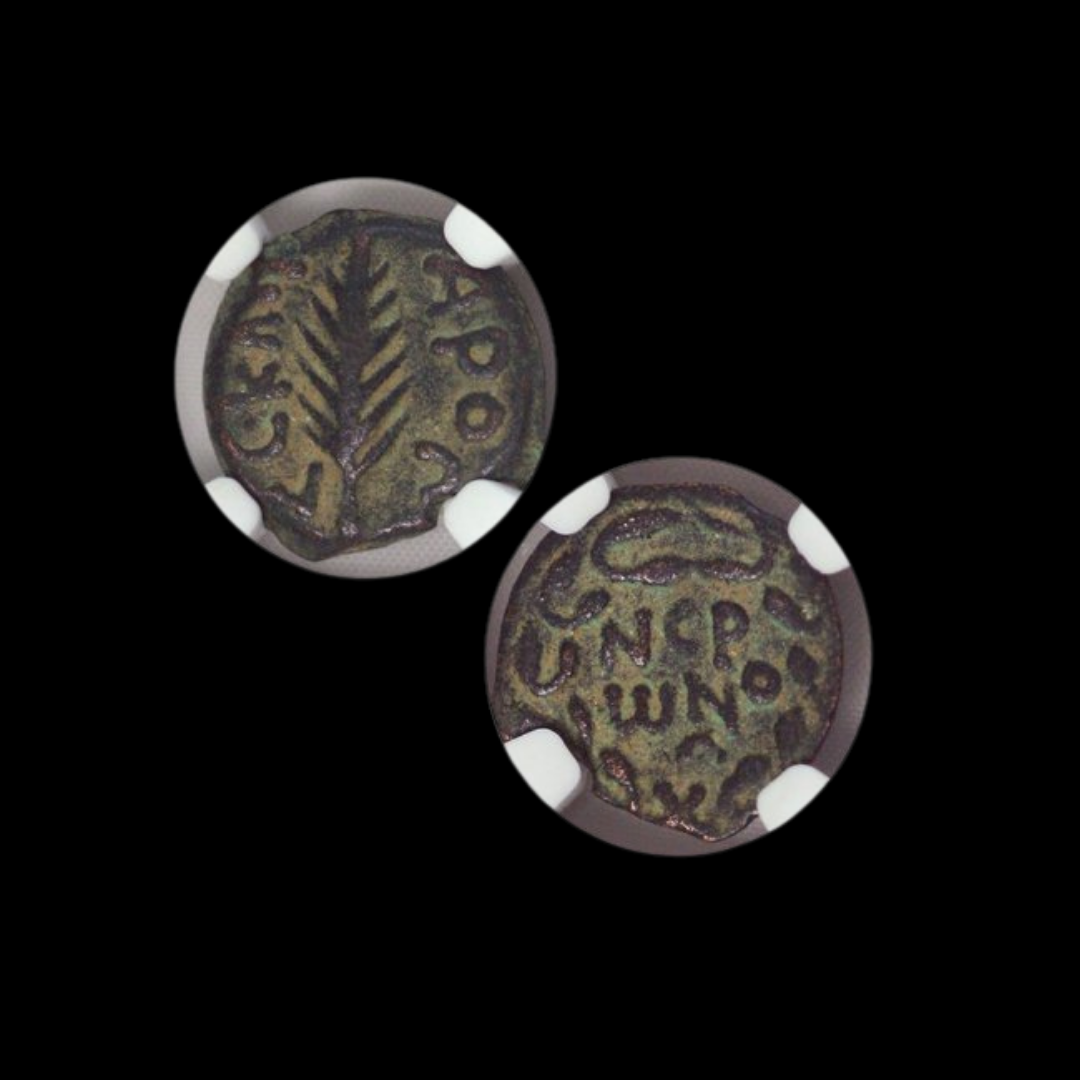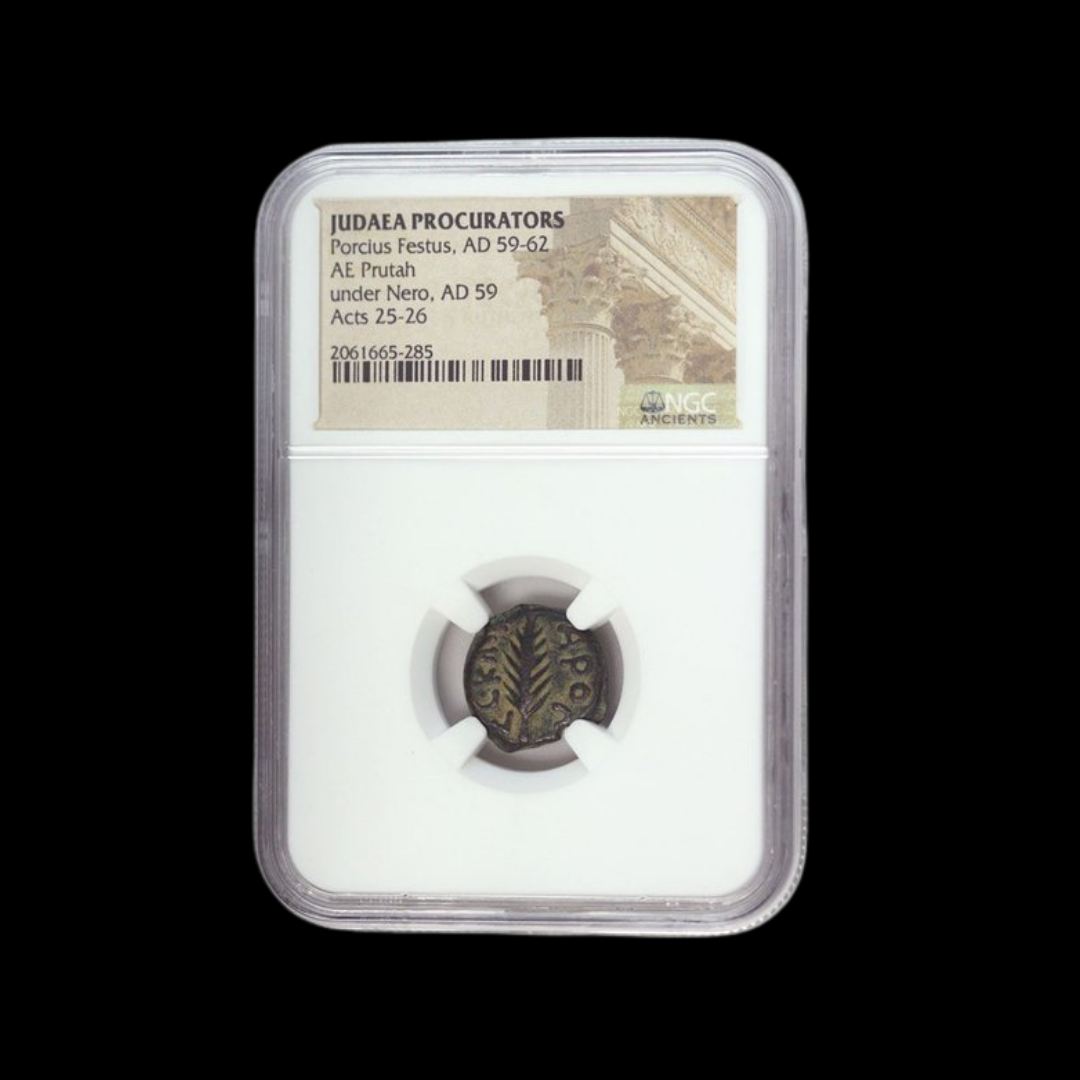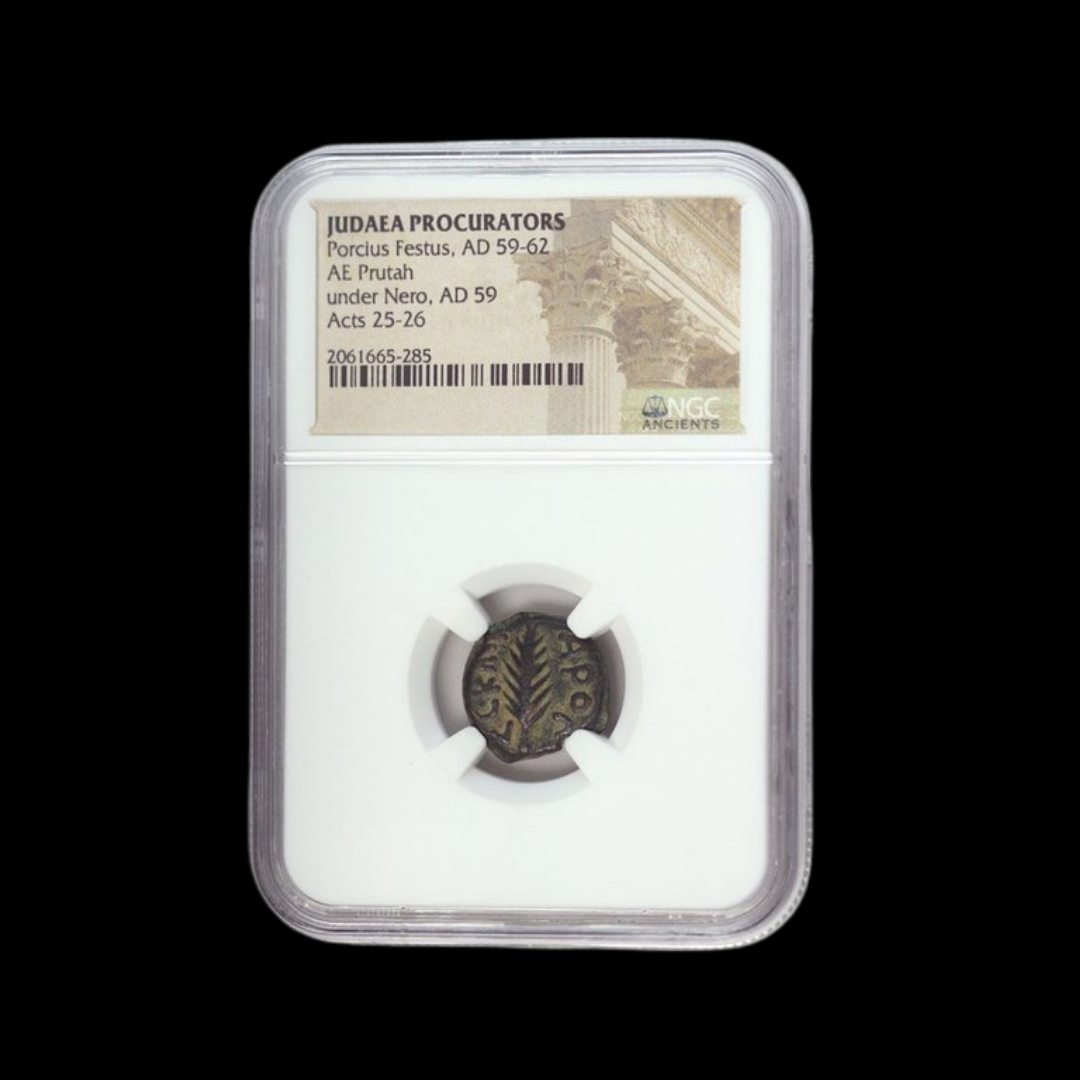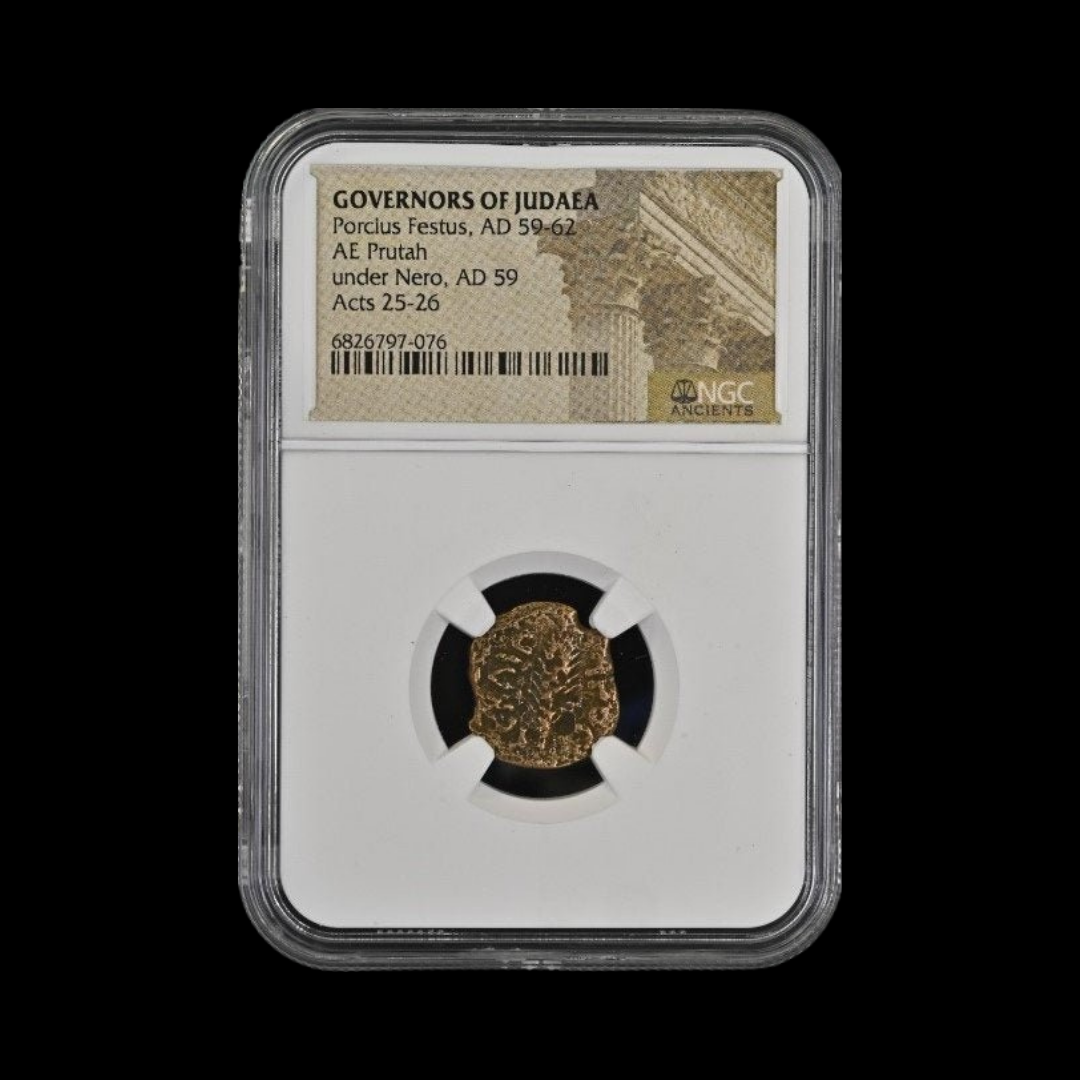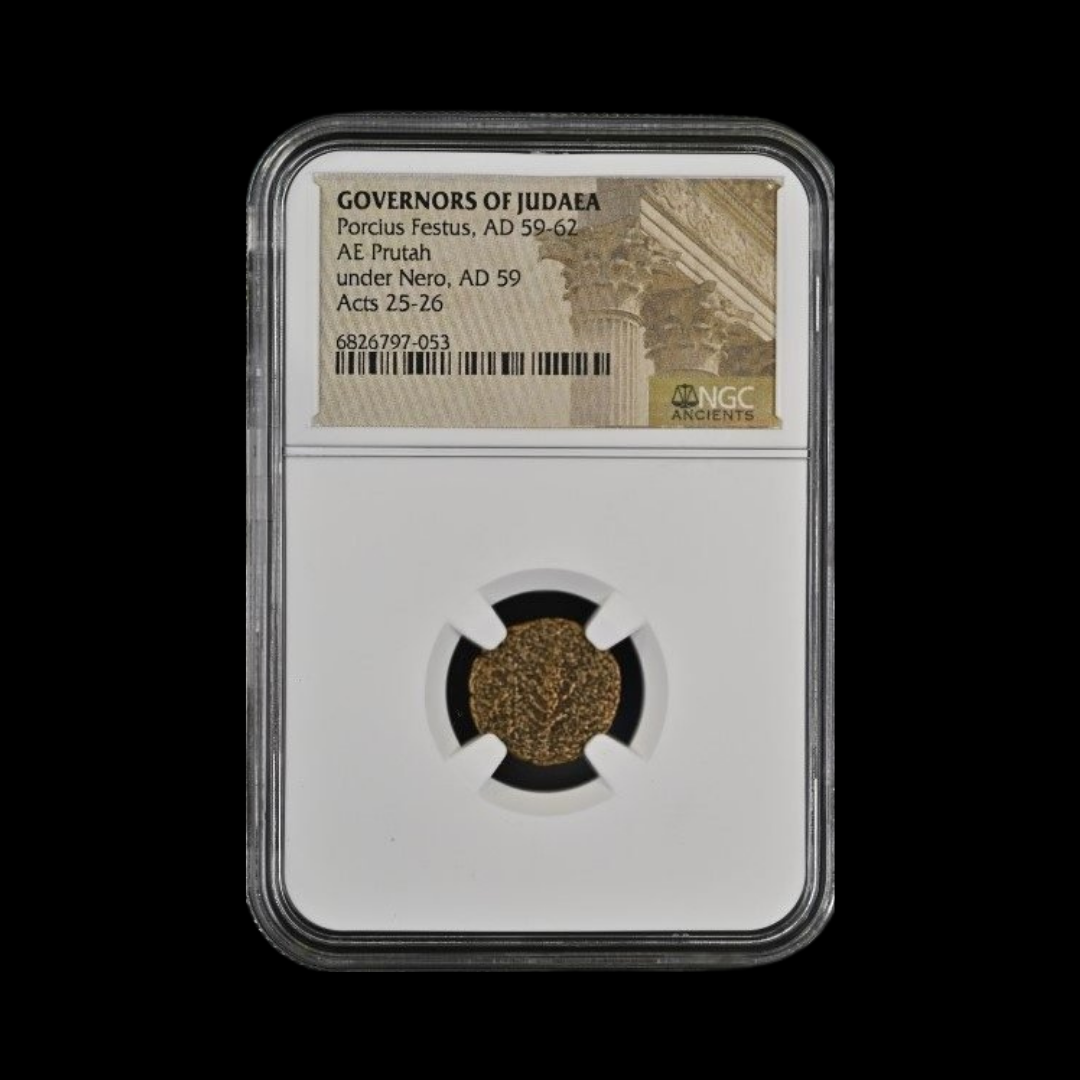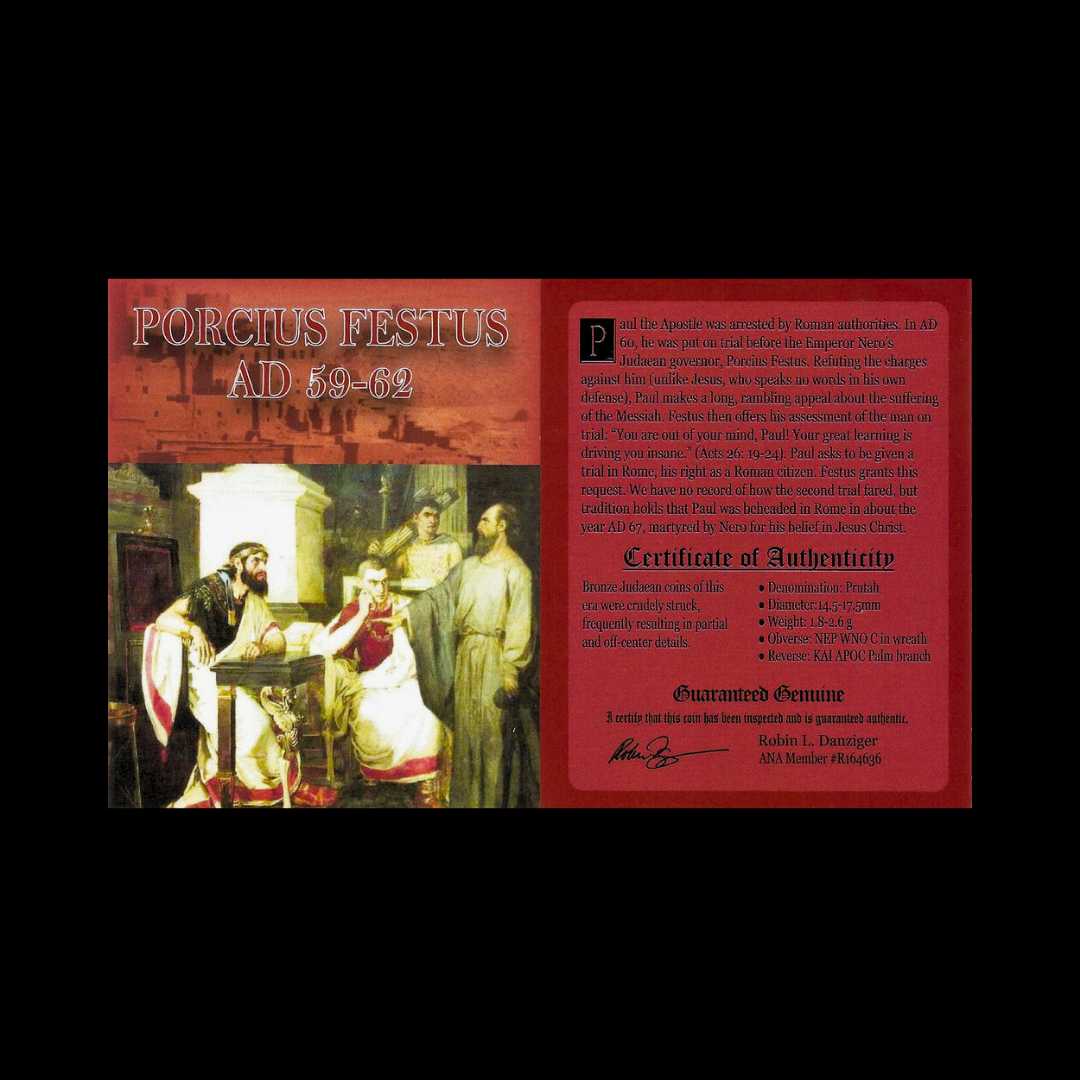 Image 1 of 4
Image 1 of 4

 Image 2 of 4
Image 2 of 4

 Image 3 of 4
Image 3 of 4

 Image 4 of 4
Image 4 of 4





Judaea AE Herod Archelaus Prutah (about 2,025-2,020 years ago)
This small bronze coin was issued under the authority of Herod Archelaus, son of Herod the Great, who ruled Judaea, Samaria, and Idumea as ethnarch (a rank below king) after his father's death. These humble coins would have been used for everyday transactions throughout his territories during the early Roman period in Judaea.
Coin Description:
Front side: Likely features symbols such as a vine leaf, bunch of grapes, or other agricultural imagery that avoided human representation
Back side: Probably includes a Greek inscription with Archelaus' title and possibly additional symbols such as a galley or anchor
Technical Details:
Bronze composition
Prutah denomination (small bronze coin used for everyday transactions)
NGC certified (Numismatic Guaranty Corporation)
Reference designation: NGC(Hg)
Minted between 4 BCE-6 CE during Archelaus' rule
Condition: Certified by NGC, specific grade not provided
Historical Significance: This coin represents a critical transitional period in Judaean history between the Herodian dynasty and direct Roman rule. Mentioned in the Gospel of Matthew, Archelaus ruled with such cruelty that his subjects appealed to Rome for relief. In 6 CE, Emperor Augustus removed him from power and converted his territories into the Roman province of Judaea under direct prefect control, setting the stage for the political climate during the ministry of Jesus and the eventual Jewish revolts against Rome.
This small bronze coin was issued under the authority of Herod Archelaus, son of Herod the Great, who ruled Judaea, Samaria, and Idumea as ethnarch (a rank below king) after his father's death. These humble coins would have been used for everyday transactions throughout his territories during the early Roman period in Judaea.
Coin Description:
Front side: Likely features symbols such as a vine leaf, bunch of grapes, or other agricultural imagery that avoided human representation
Back side: Probably includes a Greek inscription with Archelaus' title and possibly additional symbols such as a galley or anchor
Technical Details:
Bronze composition
Prutah denomination (small bronze coin used for everyday transactions)
NGC certified (Numismatic Guaranty Corporation)
Reference designation: NGC(Hg)
Minted between 4 BCE-6 CE during Archelaus' rule
Condition: Certified by NGC, specific grade not provided
Historical Significance: This coin represents a critical transitional period in Judaean history between the Herodian dynasty and direct Roman rule. Mentioned in the Gospel of Matthew, Archelaus ruled with such cruelty that his subjects appealed to Rome for relief. In 6 CE, Emperor Augustus removed him from power and converted his territories into the Roman province of Judaea under direct prefect control, setting the stage for the political climate during the ministry of Jesus and the eventual Jewish revolts against Rome.
This small bronze coin was issued under the authority of Herod Archelaus, son of Herod the Great, who ruled Judaea, Samaria, and Idumea as ethnarch (a rank below king) after his father's death. These humble coins would have been used for everyday transactions throughout his territories during the early Roman period in Judaea.
Coin Description:
Front side: Likely features symbols such as a vine leaf, bunch of grapes, or other agricultural imagery that avoided human representation
Back side: Probably includes a Greek inscription with Archelaus' title and possibly additional symbols such as a galley or anchor
Technical Details:
Bronze composition
Prutah denomination (small bronze coin used for everyday transactions)
NGC certified (Numismatic Guaranty Corporation)
Reference designation: NGC(Hg)
Minted between 4 BCE-6 CE during Archelaus' rule
Condition: Certified by NGC, specific grade not provided
Historical Significance: This coin represents a critical transitional period in Judaean history between the Herodian dynasty and direct Roman rule. Mentioned in the Gospel of Matthew, Archelaus ruled with such cruelty that his subjects appealed to Rome for relief. In 6 CE, Emperor Augustus removed him from power and converted his territories into the Roman province of Judaea under direct prefect control, setting the stage for the political climate during the ministry of Jesus and the eventual Jewish revolts against Rome.
Herod Archelaus (Ancient Greek: Ἡρῴδης Ἀρχέλαος, Hērōidēs Archelaos; 23 BC – c. AD 18) was the ethnarch[1][2] of Samaria, Judea, and Idumea, including the cities Caesarea and Jaffa, for nine years[3] (c. 4 BC to AD 6). He was the son of Herod the Great and Malthace the Samaritan, brother of Herod Antipas, and half-brother of Herod II. Archelaus (a name meaning "leading the people") came to power after the death of his father Herod the Great in 4 BC, and ruled over one-half of the territorial dominion of his father. Archelaus was removed by the Roman emperor Augustus when Judaea province was formed under direct Roman rule, at the time of the Census of Quirinius.
Josephus writes that Herod the Great (father of Archelaus) was in Jericho at the time of his death.[4] Just prior to his final trip to Jericho, he was deeply involved in a religious conflagration. Herod had placed a golden eagle over the Temple entrance, a symbol which was perceived as blasphemous.[5] The eagle was chopped down with axes. Two teachers and approximately 40 other youths were arrested for this act and immolated. Herod defended his works and offered an attack on his predecessors, the dynastic Hasmoneans. Herod killed all male lineal successors of the Hasmoneans. The Pharisees had long attacked the Hasmoneans as well, as having parentage from Greeks while under bondage. This racial slur was repeated by the Pharisees through the rule of Alexander Jannaeus and Queen Salome.[6]











